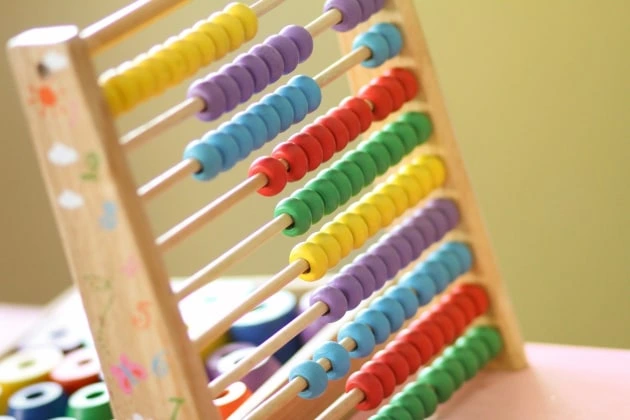
Have you ever wondered about the origins of one of the oldest calculating tools in human history? The abacus, a simple yet powerful device, has been used for centuries across various cultures to perform arithmetic operations. From its ancient beginnings to its modern adaptations, the abacus is not just a tool but a fascinating glimpse into the evolution of mathematics and education. In this blog, we’ll explore 25 interesting facts about the abacus that highlight its significance, functionality, and the impact it has had on societies around the world. Whether you’re a math enthusiast, a history buff, or simply curious, join us as we delve into the intriguing world of the abacus!
Ancient Origins: The abacus is one of the oldest calculating tools known to humanity, with its origins tracing back to around 2400 BC in ancient Mesopotamia. Archaeological findings suggest that early versions of the abacus were used by merchants and traders for counting and recording transactions. The device was essential in a society that relied heavily on trade and commerce, enabling individuals to perform calculations that were vital for economic activities.
Etymology: The term “abacus” is derived from the Greek word “abax,” which means “table” or “calculating board.” This reflects the abacus’s function as a flat surface or board where calculations could be performed. The word has roots in other languages as well, indicating the widespread use of similar counting devices across different cultures and regions throughout history.
Early Calculating Techniques: The earliest forms of the abacus involved creating a flat surface covered with sand or dust, where users could draw lines or shapes to represent numbers. Pebbles or small stones were then used as counters, which could be moved around to perform calculations. This method allowed for a tactile and visual approach to arithmetic, making it easier for individuals to grasp numerical concepts before the advent of written numbers.
Chinese Abacus (Suanpan): The Chinese abacus, known as “suanpan,” is designed with two beads on the upper deck and five on the lower deck. This structure allows for efficient representation of numbers and calculations. The suanpan is particularly versatile, enabling users to perform a wide range of mathematical operations, including addition, subtraction, multiplication, and division. Its design has remained largely unchanged for centuries, attesting to its effectiveness as a calculating tool.
Japanese Abacus (Soroban): The Japanese abacus, called “soroban,” typically features one bead on the upper deck and four beads on the lower deck. This configuration simplifies calculations and is particularly suited for decimal arithmetic. The soroban is often used in educational settings in Japan, where students learn to perform calculations quickly and accurately. The design reflects a cultural adaptation of the abacus that emphasizes efficiency and ease of use.
Roman Abacus: The Roman version of the abacus was a flat board marked with grooves or lines, where counters could be placed to represent numbers. This design facilitated basic arithmetic operations and was widely used in Roman commerce and trade. The Roman abacus represented a significant advancement in calculating technology, providing a more structured way to perform calculations compared to earlier methods that relied solely on physical counters.
Basic Arithmetic Operations: The abacus is capable of performing fundamental arithmetic operations, including addition, subtraction, multiplication, and division. Users manipulate the beads to represent numbers and carry out calculations, making it a practical tool for both simple and complex mathematical tasks. This versatility makes the abacus an enduring educational resource, helping individuals develop their arithmetic skills through hands-on practice.
Contemporary Use: Despite the advent of modern calculators and computers, the abacus is still widely used today, particularly in various parts of Asia. It is commonly employed in educational settings to teach mathematics to children, as it provides a tangible way to understand numerical concepts. Additionally, many businesses utilize the abacus for quick calculations, highlighting its continued relevance in a digital age.
Complex Calculations: The Chinese abacus, in particular, is known for its ability to perform complex calculations, including square roots and cube roots. Skilled users can execute these advanced operations with remarkable speed and accuracy, showcasing the abacus’s potential as a powerful calculating tool. This capability has made the abacus a subject of interest in mental math competitions, where participants demonstrate their proficiency in using the device.
Cognitive Benefits: Using an abacus can enhance mental calculation skills, as users often visualize the beads in their minds when performing calculations. This mental visualization fosters a deeper understanding of numerical relationships and operations. Research has shown that children who learn to use the abacus may experience improvements in cognitive skills, memory, and overall mathematical proficiency, making it an effective tool for educational development.
Different Styles of Abacuses: Various cultures have developed their own styles of the abacus, each tailored to their specific numerical systems and calculation methods. The Russian “schoty,” for instance, features a different arrangement of beads compared to the Chinese and Japanese versions. The schoty typically consists of a series of rods with beads that can slide back and forth, allowing for quick calculations. Each style reflects the mathematical needs and educational practices of its respective culture, showcasing the adaptability of the abacus as a calculating tool.
Educational Tool: The abacus is often used in teaching mathematics to children because it provides a hands-on, tactile way to understand numbers and arithmetic operations. By manipulating the beads, children can visualize mathematical concepts, making it easier to grasp abstract ideas like addition and subtraction. This interactive approach can enhance engagement and retention, helping students build a strong foundation in numeracy that supports their future mathematical learning.
Cognitive Skills Enhancement: Studies suggest that using an abacus can improve cognitive skills and memory in children. The process of moving beads to perform calculations engages multiple areas of the brain, fostering mental agility and enhancing problem-solving abilities. Research has indicated that children who learn to use the abacus often demonstrate improved attention spans and better overall academic performance, making it a valuable educational tool for developing critical thinking skills.
Historical Significance in Trade: The abacus played a crucial role in trade and commerce before the advent of modern calculators. Merchants relied on the abacus for quick calculations related to pricing, inventory, and transactions. Its ability to facilitate complex calculations made it an indispensable tool in bustling marketplaces, where speed and accuracy were essential for conducting business. The historical significance of the abacus underscores its impact on economic development and the evolution of mathematical practices.
Literary Mention: The first known mention of the abacus in literature can be traced back to the works of the ancient Greek philosopher Archimedes. His writings discuss various mathematical concepts, and the abacus is referenced as a tool for performing calculations. This mention highlights the abacus’s importance in the development of mathematics and its recognition by influential thinkers of the time, illustrating its longstanding role in the history of numerical computation.
Counting Frame Terminology: In modern educational contexts, the abacus is sometimes referred to as a “counting frame.” This terminology emphasizes its function as a tool for teaching basic arithmetic and counting skills. The counting frame typically consists of rods or wires with movable beads, allowing learners to visualize numbers and operations. This term reflects the abacus’s continued relevance in educational settings, where it is used to introduce foundational mathematical concepts to students.
Cultural Variations: Different cultures have developed unique versions of the abacus, each adapted to their numerical systems and calculation methods. For example, the Indian “gatte” and the Arabic “khayyam” are variations that reflect the mathematical traditions of their respective cultures. These adaptations demonstrate the global significance of the abacus as a calculating tool, highlighting how diverse societies have utilized similar concepts to meet their mathematical needs throughout history.
Material Composition: The abacus can be constructed from a variety of materials, including wood, plastic, and metal. The choice of material often depends on the intended use and cultural context. For example, traditional Chinese abacuses are commonly made from wood, while modern versions may use plastic for durability and affordability. The material composition affects the abacus’s aesthetics, weight, and tactile experience, contributing to its functionality as a calculating device.
Competitions: There are competitions dedicated to speed and accuracy in calculations performed using an abacus. Participants demonstrate their skills by solving complex mathematical problems in a timed setting, showcasing their proficiency with the device. These competitions not only highlight the capabilities of the abacus but also promote its use as a tool for enhancing mental math skills. They encourage participants of all ages to engage with mathematics in a fun and competitive environment.
Mental Math Competitions: The abacus is often used in mental math competitions, where participants visualize the abacus while solving problems without physically manipulating beads. This technique requires a high level of mental agility and concentration, as competitors must perform calculations quickly and accurately in their minds. These competitions have gained popularity in various regions, emphasizing the effectiveness of the abacus in developing mental calculation skills and fostering a love for mathematics among participants.
Educational Curriculum: In some educational systems, abacus skills are incorporated into the curriculum to enhance students’ mathematical understanding. Schools teach children how to use the abacus as a foundational tool for arithmetic, helping them grasp the concepts of numbers and calculations in a tangible way. This approach not only aids in developing basic math skills but also builds confidence in students as they learn to perform calculations independently. The structured learning environment provided by abacus training can lead to improved overall academic performance in mathematics.
Visualization of Numerical Relationships: The design of the abacus allows users to easily visualize numerical relationships and operations. By moving the beads along the rods, individuals can see how numbers interact and change during calculations. This visual and tactile experience helps learners understand concepts such as place value, addition, and subtraction in a concrete manner. The ability to visualize these relationships fosters a deeper comprehension of mathematics, making it easier for students to transition to more complex mathematical concepts as they progress in their education.
Precursor to Modern Calculators: The abacus is often considered a precursor to modern calculators and computers. Its design and functionality laid the groundwork for the development of more advanced calculating devices. The principles of manipulating physical objects to represent numbers and perform calculations can be seen in the evolution of technology leading to electronic calculators. The abacus’s historical significance in the realm of computation highlights its role in the progression of mathematical tools that we rely on today.
Cultural Preference: In some cultures, the abacus is still preferred over electronic calculators for certain types of calculations. For example, in parts of Asia, the abacus is valued for its ability to provide quick and accurate results without the need for batteries or electricity. This preference reflects a cultural appreciation for traditional methods of calculation, as well as the tactile engagement that the abacus offers. Many users find that the physical manipulation of beads helps them perform calculations more efficiently and with greater confidence than using electronic devices.
Recognition in Education: The abacus has been recognized in various educational systems as an effective tool for developing numeracy skills. Educational programs that incorporate the abacus often report positive outcomes in students’ mathematical abilities, as the hands-on experience promotes active learning. Teachers utilize the abacus to facilitate understanding of basic arithmetic concepts, making it a valuable resource for both classroom instruction and individual practice. Its recognition as a beneficial educational tool underscores its importance in fostering mathematical literacy among learners.
FAQs about Abacus
1. What is an abacus?
An abacus is a manual calculating tool consisting of beads or stones that slide on rods or wires within a frame. It’s used for performing arithmetic calculations, including addition, subtraction, multiplication, and division. While electronic calculators are common today, the abacus remains a valuable tool for teaching mathematical concepts, improving mental math skills, and in some cultures, for everyday calculations. Different types of abaci exist, but they all operate on the principle of representing numerical values by the position of the beads.
2. How does an abacus work?
The abacus works by representing numbers using the position of beads on the rods. Each rod typically represents a place value (ones, tens, hundreds, thousands, etc.). The value of a bead depends on its position on the rod. For example, on a typical abacus, beads in the lower section might represent ones, and beads in the upper section might represent fives. Calculations are performed by manipulating the beads according to specific rules. These rules are based on the principles of arithmetic and place value. Learning to use an abacus involves understanding these rules and practicing the bead movements to perform different operations.
3. What are the benefits of learning to use an abacus?
Learning to use an abacus offers several benefits:
- Improved Mental Math: Using an abacus requires visualizing numbers and manipulating them mentally, which strengthens mental math skills. This can lead to faster and more accurate calculations even without the physical abacus.
- Enhanced Number Sense: The abacus provides a concrete representation of numbers, helping learners develop a deeper understanding of place value and numerical relationships.
- Better Concentration and Focus: Manipulating the beads requires concentration and focus, which can improve these cognitive skills.
- Increased Problem-Solving Abilities: Learning to solve math problems with an abacus can enhance problem-solving skills and logical thinking.
- Cognitive Development: Some studies suggest that abacus training can improve cognitive abilities, including memory, spatial reasoning, and fine motor skills.
- Cultural Significance: In some cultures, the abacus has historical and cultural significance, and learning to use it can provide a connection to that heritage.
4. What are the different types of abaci?
Several types of abaci exist, each with its own characteristics:
- Suanpan (Chinese Abacus): This is one of the most common types, typically with two beads in the upper deck (representing fives) and five beads in the lower deck (representing ones).
- Soroban (Japanese Abacus): Similar to the Suanpan but usually with one bead in the upper deck and four beads in the lower deck. It’s known for its efficiency and speed.
- Roman Abacus: Used in ancient Rome, it had grooves or slots in which counters were moved. It was more complex than the Suanpan or Soroban.
- Russian Abacus (Schoty): Typically used in Russia, it often has ten beads on each wire, simplifying calculations in the decimal system.
- Napier’s Bones: While not strictly an abacus, these numbered rods were used for multiplication and division. They are a precursor to slide rules.
5. How do you learn to use an abacus?
Learning to use an abacus typically involves these steps:
- Understanding Place Value: Grasp the concept of place value (ones, tens, hundreds, etc.) and how it’s represented on the abacus.
- Learning Bead Values: Understand the numerical value assigned to each bead in the upper and lower sections of the abacus.
- Mastering Basic Operations: Start with addition and subtraction, learning the specific bead movements for each operation.
- Practicing Regularly: Consistent practice is crucial for developing speed and accuracy.
- Learning Multiplication and Division: These operations are more complex and require mastering specific algorithms.
- Seeking Guidance: Learning from a teacher or using instructional materials can be helpful, especially in the initial stages.
6. Where can I buy an abacus?
Abaci can be purchased from various sources:
- Educational Supply Stores: These stores often carry abaci as part of their math learning materials.
- Online Retailers: Many online retailers sell different types of abaci.
- Specialty Toy Stores: Some toy stores, especially those focusing on educational toys, might carry abaci.
- Craft Stores: Sometimes, craft stores might have the materials to build a simple abacus.
7. Is the abacus still relevant today?
While electronic calculators are readily available, the abacus remains relevant for several reasons:
- Educational Tool: It’s a valuable tool for teaching mathematical concepts, especially place value and number sense.
- Cognitive Development: It can help improve mental math skills, concentration, and problem-solving abilities.
- Cultural Significance: In some cultures, it’s still used for everyday calculations and has cultural importance.
- Alternative Calculation Method: It provides an alternative way to perform calculations, which can be useful in situations where electronic devices are not available.
8. Can I learn to use an abacus online?
Yes, many online resources are available for learning to use an abacus:
- Tutorial Videos: Numerous videos demonstrate how to perform calculations on an abacus.
- Online Courses: Some online platforms offer structured courses on abacus training.
- Interactive Websites: Some websites provide interactive simulations of an abacus, allowing users to practice calculations.
- Mobile Apps: Mobile apps are available that simulate an abacus and provide tutorials.







